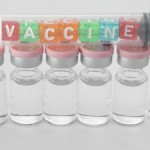
Young people who come to their doctor’s office for care are often not offered shots that they should have, including those for tetanus, diphtheria and pertussis, human papillomavirus and meningococcal disease. “Missed Opportunities for Adolescent Vaccination, 2006-2011” was published June 27 in the Journal of Adolescent Health.
According to the new study, the percentage of visits that were missed opportunities run as high as 85 percent. Young people ages 11 to 18 years old with at least one preventive care visit—a yearly check-up, for example—were much less likely to have missed opportunities for some of the vaccinations, said the study’s lead author, Rachel Katzenellenbogen, MD, of Seattle Children’s Research Institute. “Reducing these missed vaccination opportunities would improve young people’s health, including the risk for certain types of cancer and sexually transmitted infections,” she said.
HPV, pertussis are public health concerns
The human papillomavirus, or HPV vaccine, can prevent cancer and genital warts, while the tetanus, diphtheria and pertussis, or Tdap, vaccine can help curb pertussis or whooping cough. Up to two in 100 adolescents and five in 100 adults with pertussis are hospitalized or have complications, including pneumonia and death. Reported cases of whooping cough in King County have also increased dramatically in the last few years. A record-breaking pertussis epidemic occurred in King County and Washington state in December 2011.
Study included 1,628 adolescents in Seattle
Katzenellenbogen and a team of researchers reviewed health records for 1,628 adolescents at a university-based clinic in Seattle, Wash. from November 2006 through June 2011. During the study period, clinic staff did not send vaccine reminders and there was no recall system to alert clinicians about vaccinations. The study start date of November 6, 2006, was selected because it was the date of the first human papillomavirus, or HPV, vaccine administered at the clinic, shortly after the state program included the vaccines. The average number of visits per patient was 5.6 during the nearly five-year study period.
Physicians, nurses need to better track vaccines for young people
“Young people need fewer preventive care visits than infants,” said Katzenellenbogen. “Since these young people are a relatively new population to be targeted for vaccination, doctors, nurses and healthcare workers should think about the need for vaccination during each of their visits.” Doctor’s offices and health centers should also track vaccines and screening, including the use of computerized prompts through an electronic health record or even manual flags on a chart or record by nurses or medical assistants.
Katzenellenbogen and the research team said more research is needed to explore why the percentage of missed opportunities is so high, and to develop strategies that may reduce them.
This study was funded in part by the Society for Adolescent Health and Medicine Career Development Award 2011.
Katzenellenbogen is an assistant professor of Pediatrics and an adjunct assistant professor of Global Health at the University of Washington. Study co-authors from Seattle Children’s Hospital and the University of Washington, Department of Pediatrics, include: Charlene Wong, MD; James Taylor, MD; Jeffrey Wright, MD; and Douglas Opel, MD, MPH.
If you’d like to arrange an interview with Dr. Katzenellenbogen, please contact Seattle Children’s PR team at 206-987-4500 or at [email protected]

